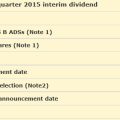The Real Secret For Successful Investments – You Will Be Amazed
There are hundreds of investment funds out there and each of them is trying to actually outperform the market. Many of them have fancy words in their names as growth, low risk, high yield, etc. But the truth is that most of them are … gamblers. Yes, they are gambling with other people’s money and at the same time, they are charging decent fees to do this. According to a study tracking the performance of 355 investment funds for 35 years (from 1970 – 2005), just 7 of them managed to beat the market by more than 2%. 9 out of 355 is a scary number. What are these extremely high-paid fund managers of the other 346 funds to get their salaries for? You could just invest your money yourself, buying the constituents of a stock index and beating all of them. Well, statistics show that you could have really done this.
Passive Investing
Passive investing is the name of the game. This means just buying a well-diversified portfolio of shares and holding them, without trying to time the market and without actively trading. This way you don’t pay for management fees and you don’t pay much in taxes and trading commissions. According to the video below, nobody knows anything about the market tomorrow, because no one can predict the future. This is why the best investment strategy, in the long run, would be passive investing, or in other words, just following the market. I can say, that I quite agree with this video. Passive investing is not only statistically the most probable way to make money on the stock market, but also it’s a lot healthier, too. When you invest passively you reduce the stress caused by losses caused by wrong investment decisions. This way you eliminate emotions from the game, which makes your chances of profitable investing a lot bigger.
For some more proof of the advantages of passive investing, watch the following video. It can really change your view about investing.
More Thoughts About Investing By Doing Nothing (Passive Investing)
Passive investing has gained a lot of attention in recent years, as investors look for ways to build their portfolios with minimal effort and low costs. Passive investing is an investment strategy that involves buying a broad basket of stocks and holding them for the long term, without selling or attempting to time the markets. This strategy relies on the belief that markets are efficient and can price securities correctly over the long term.
The primary benefit of passive investing is low costs. While actively managed funds typically charge higher fees and trading costs, passively managed funds usually charge very low expense ratios and transaction costs. This can lead to higher returns in the long run since the costs of investing are lower.
Another benefit of passive investing is that it’s a much simpler investment strategy to follow. Because the investor doesn’t have to actively research securities, analyze markets, or attempt to time the markets, it’s easier to stick to the strategy. This simplicity can also help investors to stay invested for the long term, which is typically the most successful strategy.
Passive investing can also help to reduce risk. Because the investor is not taking large positions or timing the markets, there’s less risk of losing large amounts of money due to volatility or bad timing.
There are some notable disadvantages to passive investing, as well. Since the investor is not actively trying to identify mispriced securities or over/undervalued industries, they may miss out on opportunities to make higher returns than the market average. Additionally, if security does become mispriced, the passive investor may not be able to capitalize on it.
Overall, passive investing is a great strategy for those looking for an easy way to invest with low costs and minimal risk. For those who want to maximize returns, however, a more active approach may be necessary.
This article is not investment advice. It’s my personal opinion and just an interesting point of view on investing. If you think it’s interesting, you could consider sharing it with friends by trying some of our awesome social buttons below.
Thanks!



